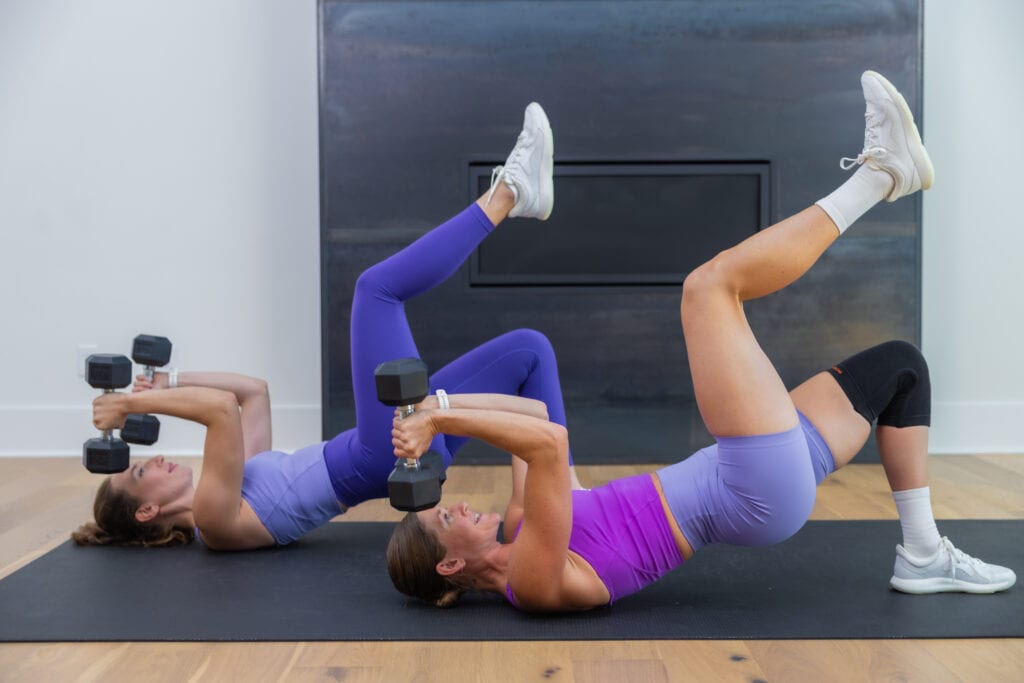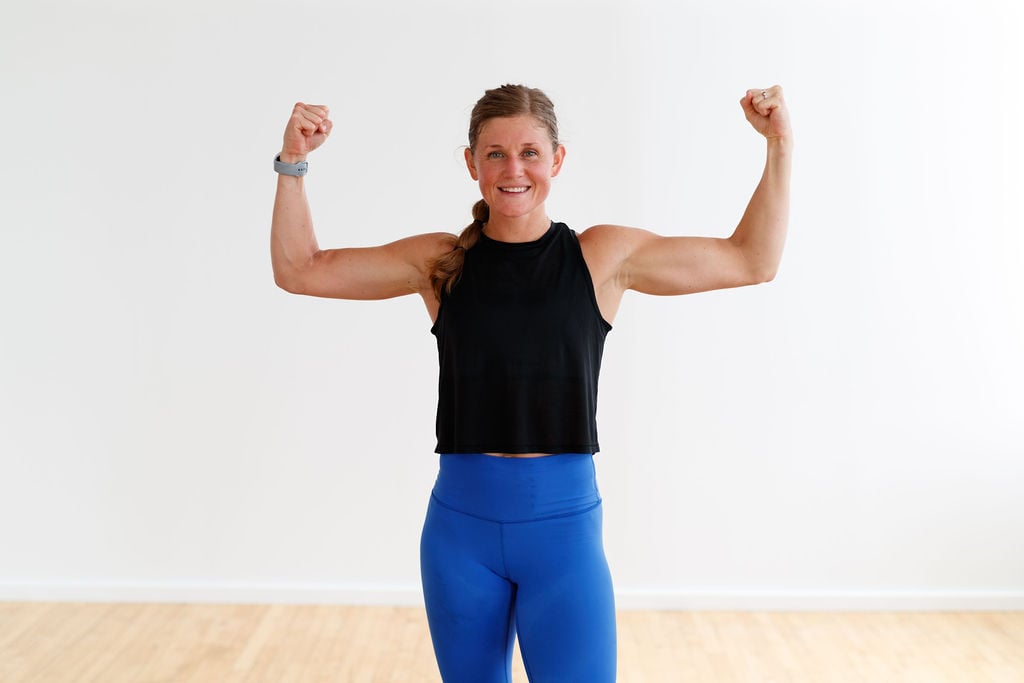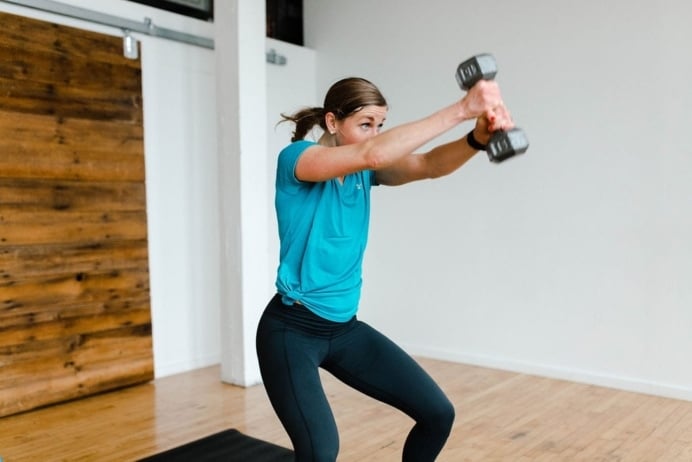

7 Best Full Body Compound Workouts for Women
Challenge your total body strength and endurance with seven of the best full body compound workouts for women. Compound workouts engage multiple muscle groups at once. This functional style of training is perfect for anyone with a busy schedule. Train every major muscle group at home with just a set of dumbbells.

Compound workouts with dumbbells are one of the most effective ways to build total body strength at home.
Compound exercises, or exercises that engage multiple muscle groups, have many benefits. They save time, allow you to lift heavier weights, increase calorie-burn, improve core strength and stability, and build muscle.
I’ve rounded up seven of my favorite compound workouts that are great for all seasons of life. Whether you are a beginner working out at home, pregnant or postpartum – these full body workouts are designed for you.

Below you’ll find the best compound workouts to build total body strength with weights.
Under each workout video, you’ll find details about the format of each workout and the equipment needed so you can easily find the workout that best fits your needs.
Compound Workouts FAQs
Compound workouts combine exercises that engage several different muscle groups at once to perform a lift or movement. For example, a squat engages the muscles in your glutes, quads, hamstrings, calves and core. Compound exercises are a form of multi-joint functional strength training, building strength for the motions you perform every day, such as pressing, pushing, lifting and twisting.
Variations of squats, deadlifts, chest presses, shoulder presses, push ups, pull ups, overhead presses and back rows are some of the best compound lifts. All of these exercises can be done at home with a set of dumbbells.
This varies depending on your personal fitness and training goals. It’s important to allow your body proper recovery time to repair the muscles you broke down during strength training. In general, beginners should train compound movements one to two times a week. As you progress, you can advance to training compound movements three times a week. A well-rounded workout routine will also include compound upper body workouts and compound lower body workouts.
Both compound exercises and more targeted isolation exercises have benefits and should be included in a well-rounded training program. The benefits of compound exercises are more efficient, meaning you can often lift heavier weights and burn more calories. Whereas isolation movements (or exercises that focus on a specific muscle group, such as squat exercises, tricep exercises, back exercises or chest exercises) can improve muscle definition and address muscle imbalances or weaknesses.
There are several benefits of compound exercise. According to the American Council of Exercise, compound exercises: burn more calories, improve intermuscular coordination, elevate the heart rate and provide a cardiovascular training benefit, improve dynamic flexibility and movement efficiency.
7 Compound Workouts For Women
1. 9 Best Compound Exercises (Full Body)
- Equipment: Medium-to-Heavy Set of Dumbbells
- Workout Format: 9 total body exercises done in timed intervals. Perform each exercise for 40 seconds work, followed by 20 seconds rest. Repeat x2 sets. End with a 4-Minute AMRAP (repeating 4 dumbbell exercises from the workout in as many rounds as possible).
- Pregnancy/Postpartum Friendly: Follow the modifier in the workout as needed.
2. 7 Best Strength Training Exercises for Women
- Equipment: Medium-to-Heavy Set of Dumbbells
- Workout Format: 7 full body strength exercises done in timed intervals. Perform each exercise for 45 seconds work, followed by 15 seconds rest. Repeat x3 sets.
- Pregnancy/Postpartum Friendly: Follow the modifier in the workout as needed.
3. 30-Minute Full Body Circuit Workout
4. 30-Minute Full Body Dumbbell Workout
5. 35-Minute Full Body Workout At Home
6. 30-Minute Dumbbell HIIT Workout
7. 20-Minute Full Body Strength (No Repeats + No Jumping)
More Workouts
Full Body WorkoutsPin This: Compound Workouts for Women























